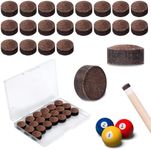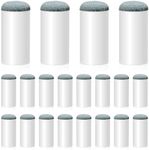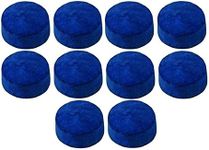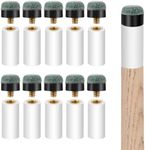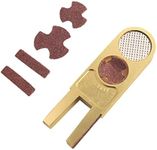Buying Guide for the Best Pool Cues Tips
Choosing the right pool cue tip is essential for improving your game and ensuring you have the best possible experience while playing. The tip of your pool cue is the only part that makes direct contact with the cue ball, so its quality and characteristics can significantly impact your performance. When selecting a pool cue tip, consider factors such as hardness, size, and material. Understanding these key specifications will help you make an informed decision that suits your playing style and needs.HardnessThe hardness of a pool cue tip refers to how firm or soft the tip is. This spec is important because it affects the amount of control and spin you can apply to the cue ball. Tips are generally categorized into soft, medium, and hard. Soft tips provide more spin and control but wear out faster. Medium tips offer a balance between control and durability, making them a popular choice for many players. Hard tips are more durable and provide less spin, which can be beneficial for power shots. To pick the right hardness, consider your playing style: if you prefer finesse and spin, go for a softer tip; if you need durability and power, a harder tip might be better.
SizeThe size of a pool cue tip is measured by its diameter, typically ranging from 11mm to 14mm. This spec is important because it influences the accuracy and control of your shots. Smaller tips (11mm-12mm) offer more precision and are often preferred by advanced players who focus on finesse and detailed shots. Larger tips (13mm-14mm) provide a larger surface area, making them more forgiving and easier to use for beginners. To choose the right size, consider your skill level and playing style: if you're a beginner, a larger tip can help you develop your skills, while a smaller tip can offer more control for experienced players.
MaterialPool cue tips are made from various materials, including leather, layered leather, and synthetic materials. This spec is important because the material affects the tip's performance, feel, and durability. Leather tips are the most common and provide a good balance of control and durability. Layered leather tips consist of multiple layers of leather, offering consistent performance and longer lifespan. Synthetic tips are durable and low-maintenance but may not provide the same feel as leather. To pick the right material, consider your preferences for feel and maintenance: leather tips offer a traditional feel, while synthetic tips require less upkeep.
